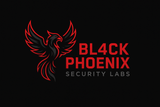The New Shadow IT: Taming Rogue AI Notetakers

The Silent Infiltration: AI Notetakers as the New Face of Shadow IT
In enterprises across the globe, a new, subtle security challenge is unfolding—not in server rooms or through sophisticated phishing attacks, but in everyday virtual meetings. A recent discussion among system administrators highlights a growing concern: the unchecked proliferation of AI-powered notetaking services like Otter.ai and Read.ai, which are quietly becoming the latest wave of "Shadow IT."
Employees, seeking to boost productivity, are independently signing up for these services and connecting them to their corporate calendars. With a few clicks, an AI bot is granted access to join confidential meetings, transcribing conversations that may contain sensitive intellectual property, strategic plans, or private customer data. While the user sees a helpful assistant, security teams see a significant, unsanctioned data exfiltration vector.
From Productivity Hack to Corporate Risk
The core of the problem lies in the disconnect between employee intent and security reality. An administrator in an online forum described the struggle: "People keep going out and signing up for things... connecting it to their calendars, and then the notetakers are auto joining meetings." The response from the organization was to address it through policy and active blocking, but this reactive stance illustrates a much larger, industry-wide challenge.
The risks introduced by these rogue AI agents are multifaceted:
- Data Sovereignty and Privacy: Where is this transcribed data being stored? Is it being used to train third-party AI models? The terms of service for these consumer-grade tools often lack the robust data protection guarantees required by enterprise compliance standards like GDPR, HIPAA, or CCPA.
- Confidentiality Breaches: An AI bot is an unknown third party in a meeting. Its presence could violate NDAs with clients and partners, or inadvertently leak internal-only discussions to an external service with questionable security protocols.
- Access Management Complexity: These tools often use OAuth to gain persistent access to calendars and accounts. Revoking this access requires more than a simple password change and can be difficult to track at scale without the right security tools.
A Multi-Pronged Strategy for Regaining Control
Simply blocking the domains of known AI notetaker services is a game of whack-a-mole. As new services emerge, a purely technical blocking strategy is bound to fail. A more holistic approach is necessary, balancing security imperatives with the legitimate productivity needs of the workforce.
Bl4ckPhoenix Security Labs recommends a layered defense strategy:
- Policy and Communication: The first step is establishing a clear and unequivocal policy on the use of third-party AI services. This policy must be communicated effectively, explaining not just the "what" (the ban) but the "why" (the risks to the company and its clients).
- Technical Governance and Controls: Leverage existing security platforms to manage this threat. This includes configuring Cloud Access Security Brokers (CASBs) to identify and block unsanctioned applications. More granularly, administrators within Microsoft 365 and Google Workspace can review and restrict third-party OAuth applications, preventing them from gaining access in the first place.
- User Education: Equip employees to be the first line of defense. Training sessions can raise awareness about the dangers of Shadow IT and guide them on how to request and vet new software through official channels.
- Provide Vetted Alternatives: The demand for these tools is real. Rather than creating a vacuum, security and IT teams should proactively evaluate and deploy enterprise-ready AI tools that meet security standards. By providing a sanctioned alternative, you satisfy user needs while maintaining control over corporate data.
The Road Ahead: AI Governance
The rise of unauthorized AI notetakers is a symptom of a larger trend. As AI becomes more integrated into daily workflows, the boundary between personal productivity tools and corporate assets will continue to blur. This incident serves as a critical reminder for organizations to move beyond reactive security measures and build a proactive framework for AI governance. The challenge isn't just about blocking the AI bot in today's meeting; it's about securing the intelligent, automated enterprise of tomorrow.




